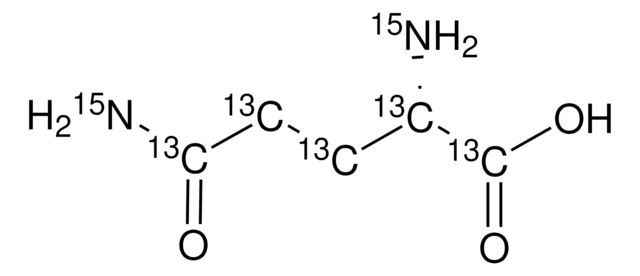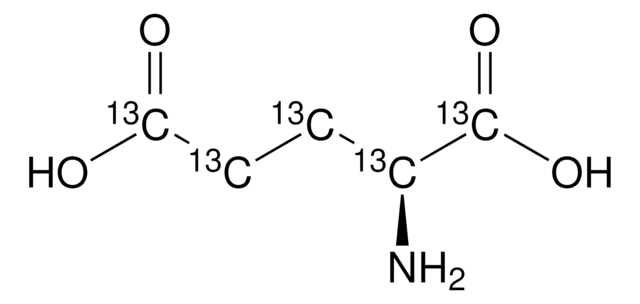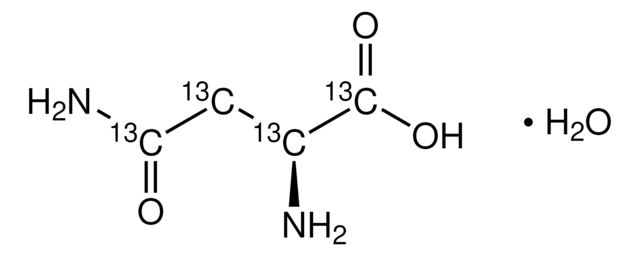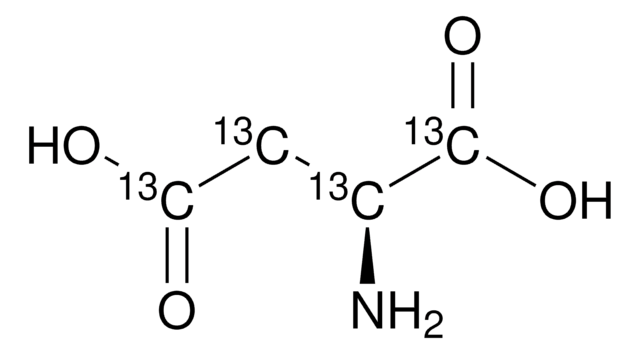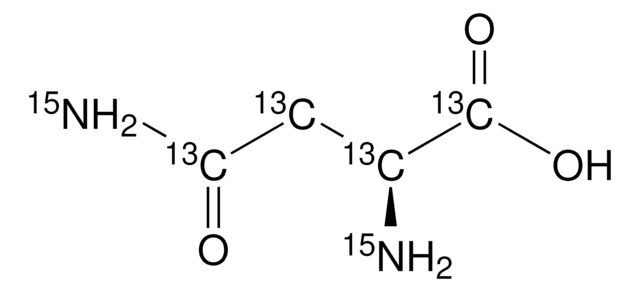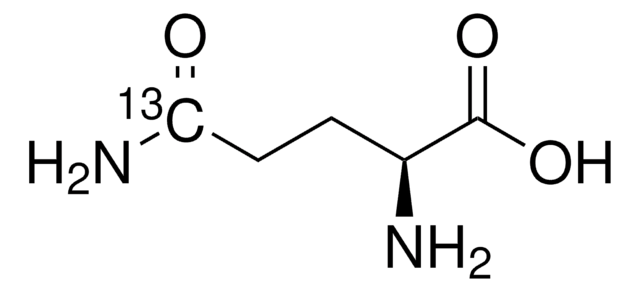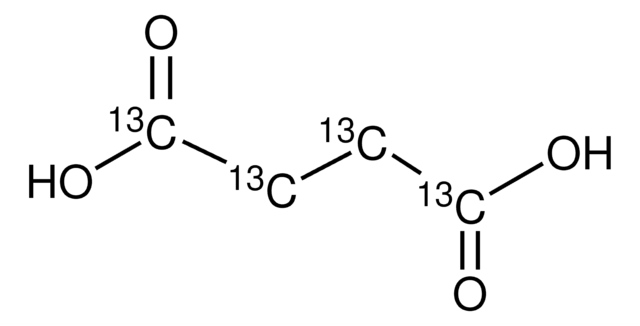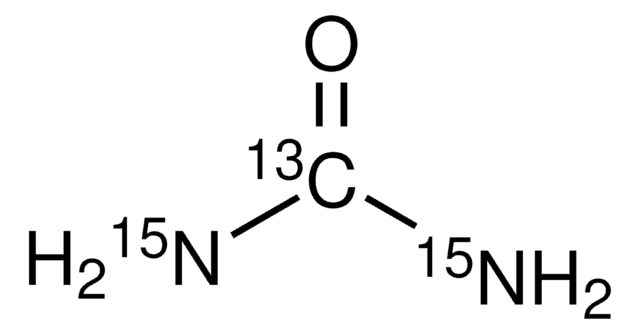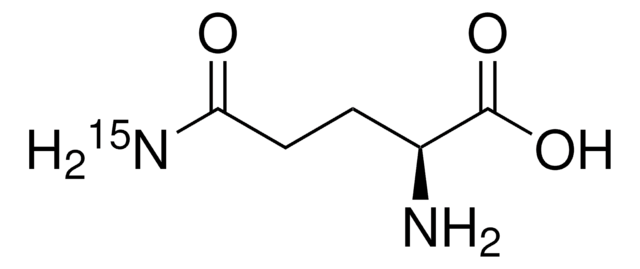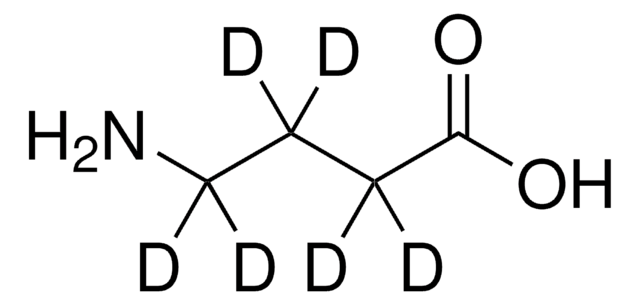607851
L-Glutamic acid-13C5,15N
98 atom % 15N, 98 atom % 13C, 95% (CP)
Sinonimo/i:
(S)-2-Aminopentanedioic acid-13C5,15N, 13C and 15N Labeled L-glutamic acid, Glu-13C5,15N
About This Item
Prodotti consigliati
Purezza isotopica
98 atom % 13C
98 atom % 15N
Saggio
95% (CP)
Forma fisica
solid
Attività ottica
[α]25/D +31.0°, c = 2 in 5 M HCl
tecniche
bio NMR: suitable
Punto di fusione
205 °C (dec.) (lit.)
Spostamento di massa
M+6
Stringa SMILE
[15NH2][13C@@H]([13CH2][13CH2][13C](O)=O)[13C](O)=O
InChI
1S/C5H9NO4/c6-3(5(9)10)1-2-4(7)8/h3H,1-2,6H2,(H,7,8)(H,9,10)/t3-/m0/s1/i1+1,2+1,3+1,4+1,5+1,6+1
WHUUTDBJXJRKMK-UFLWJPECSA-N
Descrizione generale
Confezionamento
Prodotti correlati
Codice della classe di stoccaggio
11 - Combustible Solids
Classe di pericolosità dell'acqua (WGK)
WGK 3
Punto d’infiammabilità (°F)
Not applicable
Punto d’infiammabilità (°C)
Not applicable
Scegli una delle versioni più recenti:
Possiedi già questo prodotto?
I documenti relativi ai prodotti acquistati recentemente sono disponibili nell’Archivio dei documenti.
I clienti hanno visto anche
Il team dei nostri ricercatori vanta grande esperienza in tutte le aree della ricerca quali Life Science, scienza dei materiali, sintesi chimica, cromatografia, discipline analitiche, ecc..
Contatta l'Assistenza Tecnica.
